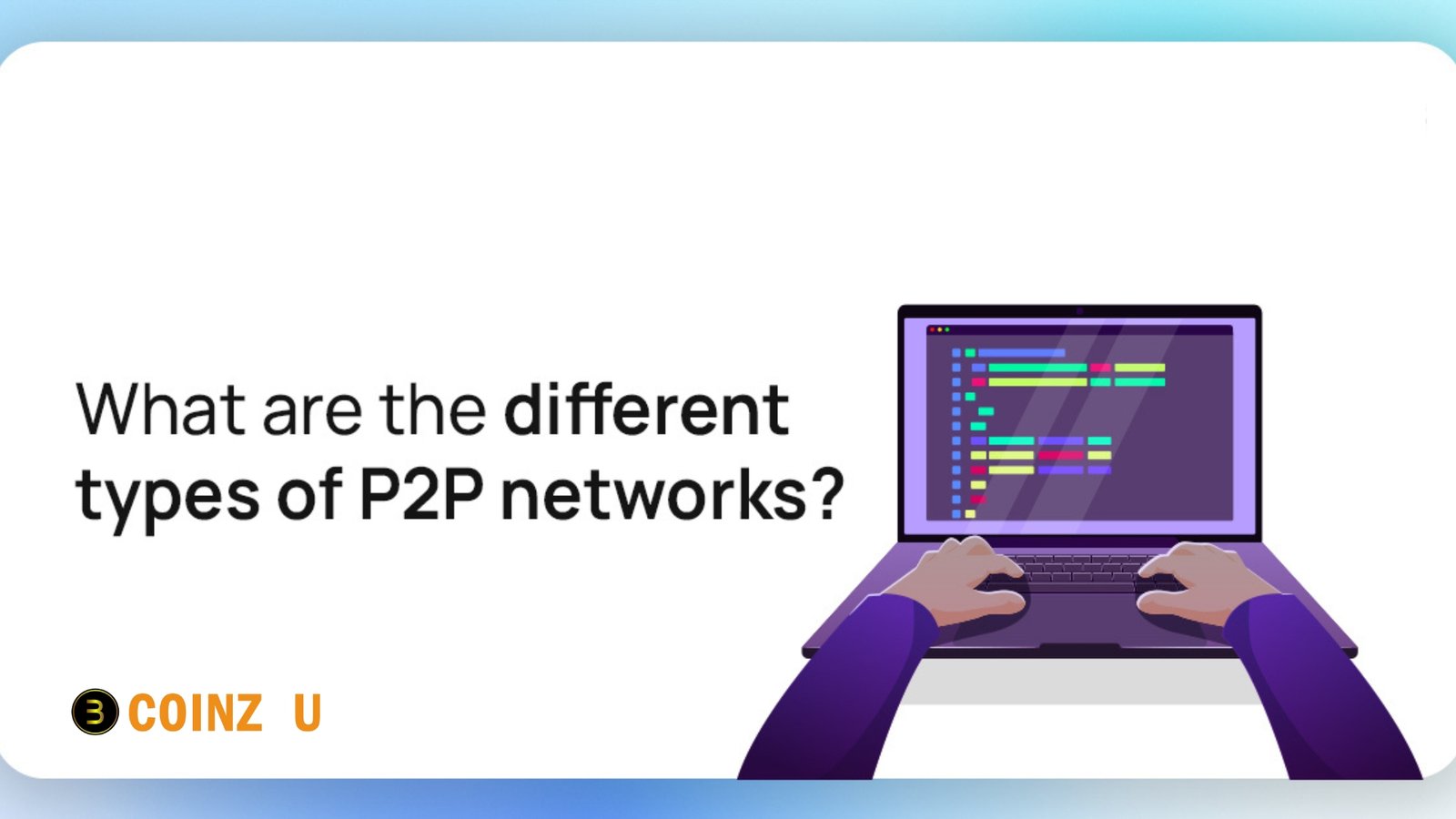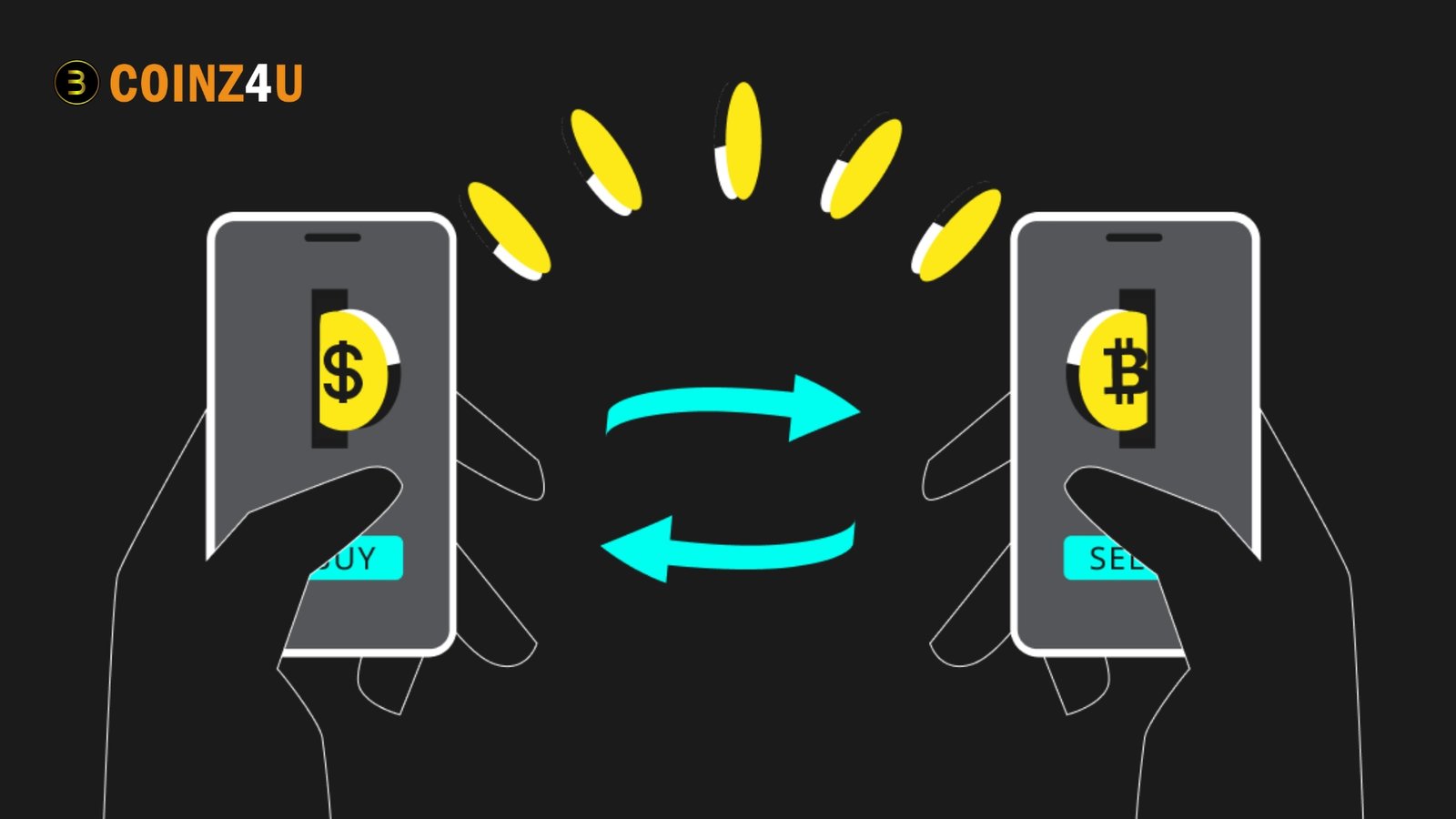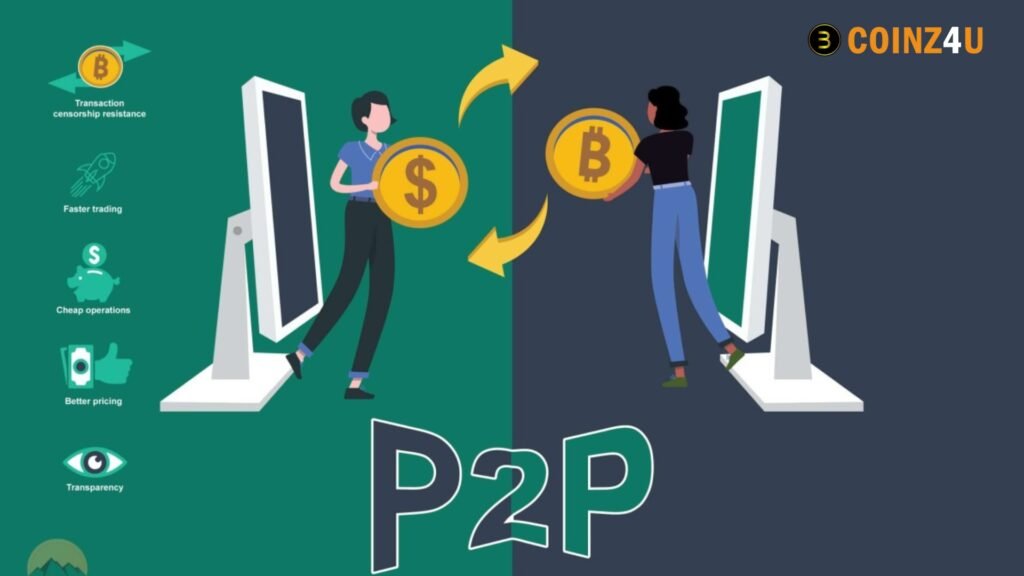P2P Trading in Crypto Exchanges—How Does it Work? A form of cryptocurrency exchange known as “peer-to-peer” (P2P) trading eliminates the middleman by letting users trade directly. P2P trading sites are sometimes far less stringent in their criteria compared to conventional Bitcoin BTC $63,254 exchanges. The former usually have tight restrictions and demand users to undergo a verification process before accessing and utilizing the platform.
Unlike automated engines, with peer-to-peer (P2P) trading, you can choose your favorite offer and trade directly with a counterparty. This gives you more leeway to select the most cost-effective tariff and payment option for your requirements. You can better protect your privacy when you engage with a counterparty directly.
How does P2P Crypto Trading Work?
One way peer-to-peer (P2P) trading platforms work is by connecting potential buyers and sellers. Users must keep their funds in a digital wallet managed by the platform, and the site usually takes a tiny charge for each exchange. Some have compared P2P exchanges and markets such as Facebook Marketplace or Craigslist because both facilitate cryptocurrency transactions. In most cases, buyers and sellers can peruse or make cryptocurrency ads.
To ensure the safety of all parties engaged, most peer-to-peer (P2P) transactions employ a rating or feedback system. For safety reasons, transacting in Bitcoin on social media is not a good idea, even if you find someone interested in purchasing some.
Since Facebook Marketplace and Twitter are not P2P platforms, building trust on these sites is difficult. There is no guarantee that the buyer will pay for the Bitcoin once you send it to them. But, with a peer-to-peer platform, you can see their ratings and reputation before you buy from them.
Types of P2P Networks
A brief overview of several P2P networks will help shed light on their operation. Aside from P2P platforms for cryptocurrency trading, there is a wide range of P2P networks to choose from, each with its own set of advantages:
File-sharing
One example of a popular P2P network is a file-sharing network. People can upload and share media files like movies, songs, and books on these sites. Some common examples include file-sharing websites that allow users to connect and transfer files directly from their computers. There are several legal uses for file-sharing P2P networks, even though they are being exploited to download copyrighted information.
Telephony or VoIP
Without a centralized server or telephone provider, peer-to-peer (P2P) telephony network users can connect and make phone conversations. Another form of peer-to-peer telephony network that enables users to make calls and offers services like instant messaging and video conferencing is VoIP or Voice over Internet Protocol.
Media streaming
Many popular streaming services rely on P2P technology to make their services work. For example, YouTube uses P2P streaming to deliver its content to users. Several other media services use the same method.
Pros and Cons of P2P Crypto Trading
Advantages
There are many advantages to using P2P crypto trading platforms, including:
Multiple payment methods
The flexibility to accept a broad range of payment methods is a crucial feature of peer-to-peer (P2P) crypto trading platforms. Bitcoin, Ethereum (ETH) ($3,803), and Litecoin (LTC) ($83.35) are some examples of digital currencies that fall into this category, along with more conventional payment methods like PayPal and credit cards.
Secure transactions
P2P trading platforms often use security features such as encryption and two-factor authentication to protect trade. As a result, users can feel confident that their funds are safe when engaging in transactions on these networks.
Offers a global marketplace for buying and selling to users worldwide
The global nature of P2P crypto trading allows users to work with anyone, regardless of location. This opens up a world of possibilities, allowing you to trade in any currency or asset you like.
No restrictions apply, even in countries with strict crypto trading regulations.
Governments enacting stringent crypto regulations cannot shut down P2P crypto trading platforms due to the lack of a central authority. You may be unable to purchase or sell as much bitcoin as you’d want due to country-specific limitations.
Community and customer support
A big community of users who talk about cryptocurrencies, industry news, and trends is present on many P2P crypto trading platforms. As a result, you can acquire helpful tips and information about the performance of other coins, which can impact your investing choices for the better.
Allows you to customize your offers with ad posting to attract sellers
Marketplaces are a common feature of P2P systems where users can post ads for goods and services. Plus, you may personalize your offer with various features like discounts and payment arrangements on many of these networks. With these personalization options, you have more control over your cryptocurrency trading experience than with centralized exchanges.
No trading fees or commissions
Because P2P trading platforms connect sellers directly with buyers, they don’t charge any transaction fees or commissions. This allows you to buy and sell currencies without worrying about extra costs impacting your bottom line.
Great transaction speed
Payment methods employed by P2P crypto trading platforms determine the transaction speed. For instance, it’s common practice to process credit card transactions instantly. On the other hand, bank transfers could add a few days to the process. However, compared to centralized exchanges, the transaction time is significantly faster overall.
Flexible trade orders
You have greater control over your trades using a P2P platform since you may establish your trade orders. You have complete control over the amount of money you wish to exchange and the price at which you are ready to buy or sell. Centralized exchanges, in which the exchange manages the order book, do not offer this level of freedom.
Disadvantages
Like all other networks, some potential risks are associated with using P2P crypto trading platforms. These include:
Low liquidity
The liquidity of peer-to-peer (P2P) crypto exchanges is often lower than that of centralized exchanges, so matching your trade order may not always be possible. This can lead to longer waiting times, affecting the price of the currency you are trying to buy or sell.
The risk of scams
Since they lack a governing body, scams are more likely to occur on peer-to-peer (P2P) crypto trading platforms. Some individuals may intentionally mislead other traders by, for instance, creating fraudulent profiles or posting inaccurate information. Keep these dangers in mind and safeguard yourself by avoiding unscrupulous users and researching prospective vendors before purchasing.
Slow trading speeds
There are benefits and drawbacks to P2P crypto trading systems, just like any other trading platform. Since one side may postpone the transaction in the middle, trading speeds can be somewhat slow, which is one of the significant drawbacks. Attempts to purchase or sell Bitcoin may be delayed or frustrated as a result, and if the currency’s price changes during that period, it could affect your bottom line.
How to Initiate a P2P Crypto Exchange
Finding a suitable platform is the first step in starting a peer-to-peer (P2P) cryptocurrency exchange. It is wise to examine the features and fees of several P2P crypto trading platforms before making a final decision.
After settling on a platform, the next step is to open an account and fund it with the currency you wish to trade. Posting offers to purchase or sell bitcoins becomes possible once your account is set up. You can also look at what other people provide and deal directly with them.
Users must take extra precautions to avoid fraud and other dangers because there is no overarching authority on peer-to-peer (P2P) crypto trading platforms. Always trade currencies online over a secure connection, use strong passwords and two-factor authentication, and thoroughly check the seller’s credentials.
Key Features of a P2P Platform
The key features you should look for in a P2P trading platform are:
- User-friendly interface: The platform should have an intuitive, user-friendly interface to help you find the cryptocurrencies you’re looking for easily and quickly and process and manage your trades.
- Robust security: The exchange should have strong security features, such as multi-factor authentication and encrypted storage for your coins to help protect your data and funds.
- Reputation: To ensure that you’re dealing with a legitimate and trustworthy platform, it’s essential to research the exchange you’re considering using diligently. This includes looking at user reviews and checking for any red flags.
- Supported currencies: When choosing a P2P exchange, ensure it supports the cryptocurrencies you’re interested in buying or selling.
- Payment methods: The platform should offer a variety of payment methods to choose from, such as bank transfer, credit/debit card, or PayPal.
- Fees: Be sure to check the fees charged by the platform, as these can vary depending on the exchange. You may also be charged fees by your payment provider when using specific methods to fund your account.
- Customer support: It’s essential to have access to customer support if and when you face problems with the platform or need help with a trade.
Is P2P Trading More Profitable than Exchanges?
Due to the lack of a central authority controlling pricing, many individuals think that peer-to-peer crypto trading can be more lucrative than conventional exchanges. Using a peer-to-peer marketplace is a good idea to get the most out of your cryptocurrency trading gains. These platforms typically have higher exchange rates and cheaper fees.
The sheer volume of traders using P2P platforms also makes them more liquid than conventional exchanges. This makes it more convenient to identify people willing to purchase or sell your preferred money whenever needed. Do your homework before committing to a platform, and be wary of making rash decisions when trading online.
P2P crypto trading, if done right, can be a fast and easy way to buy and sell cryptocurrencies. The advantages of this expanding market should be seriously considered by anyone seeking greater trading freedom or a chance to profit from price changes in digital money.
[sp_easyaccordion id=”3618″]


